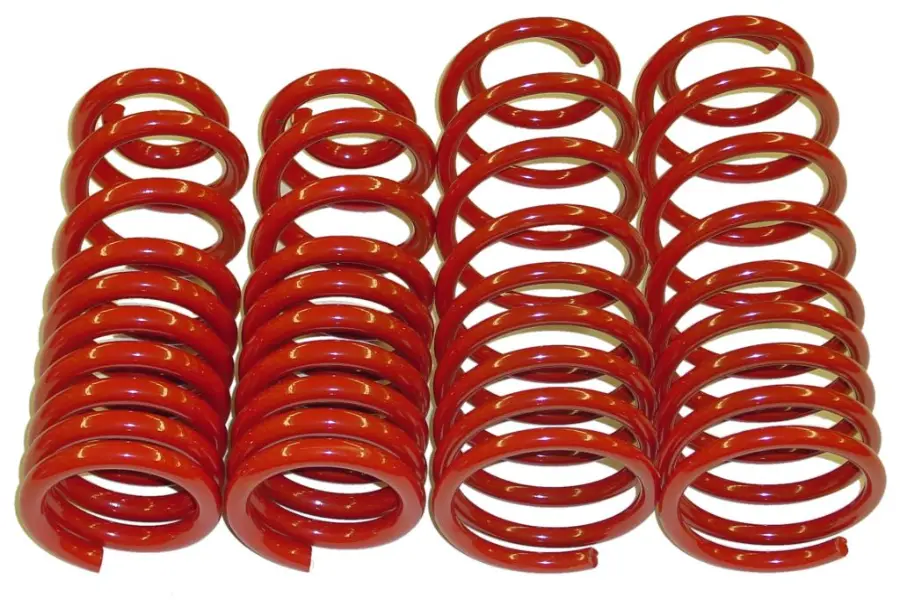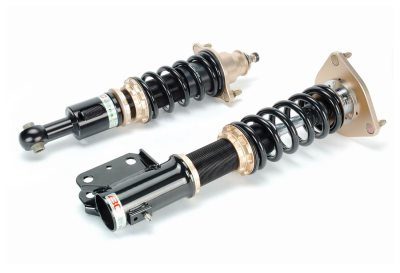Lowering Your Car: What You Need To Know & Pros And Cons
It’s no secret that lowering your car or truck can make it look amazing. It can make a standard hatchback and make it look like a racing car, or take an SUV and make it look like a sports wagon. But while there might be a post in handling performance, there are both pros and cons to lowering your vehicle. Do it right, and you’ll have a car that’s faster in the corners and while accelerating and braking, but do it wrong, and you’ll have a hot mess that’s uncomfortable to drive and lowers performance.
So, should I lower my car?
Below, we’ve given you the quick reasons as to why you should, or maybe shouldn’t, lower your car:
| Pros | Cons |
| Less roll when cornering | More vibrations into the car |
| Improved handling | Uncomfortable ride |
| Improved stability when accelerating and braking | Difficult to drive on uneven road surfaces |
| Improved traction | Change in suspension geometry |
| Improved centre of gravity | Uneven tyre wear |
| Better aerodynamics | Specialist equipment needed to jack up car |
| Improved agility | Loss of some warranties |
| Looks better | Can be expensive |
| Some insurers won’t cover modifications |
There are a few ways you could lower your car. Some will simply buy lowering springs and save some money while others will spend four figures on a set of adjustable coilovers or bags (we’ll talk about bags in another article). Some, wrongly, will cut their existing stock springs. The first two have their place, but cutting springs is incredibly dangerous and shouldn’t be done at any cost.
Lowering Springs

These are the cheapest and easiest way to lower your car’s ride height while staying safe, and are usually one of the first mods someone will do to their car. For only a few hundred, you can easily buy and fit these to your car and lower its centre of gravity. While they won’t allow anywhere near as much of a performance increase compared to coilovers, they will have a slight improvement on the car’s handling. And of course, it’ll look better.
The downsides to lowering springs are that they can’t be adjusted like some coilovers, and they can seriously decrease the ride quality of your car. However, usually, the more expensive the spring, the better performance and comfort you’ll get when you fit them. Lowering springs will usually see up to a 60mm decrease in ride height, but the lower you go, the stiffer your ride will be. It’s completely up to you and your personal preferences how low you want to go.
These will increase wear on your other suspension components, especially the dampers.
Coilovers

Coilovers can be much more expensive than lowering springs depending on what level of quality you want, but will give you much more of a performance increase. They do this by combining perfectly paired dampers with springs, and while you sacrifice some road comfort, they provide a lot of extra control over stock suspension.
Depending on the product, these can be fully adjustable, meaning you can adjust not only your ride height, but your damping, too. this will make a huge difference if you’re wanting to race your car, and will also allow it to be set up for different surfaces and scenarios.
Pros

Less roll when cornering. With more damping and spring rate, the movement of weight can be controlled more precisely when the car takes a corner. This will result in better handling, and less chance of understeer or oversteer.
Improved handling. Less roll means you can rely on your car more in corners. It becomes a lot more controllable and will react faster to your inputs. However, a badly set up suspension will do the opposite.
Improved stability when accelerating and braking. When under heavy braking or acceleration, the car will move its weight forward and backwards. This, while is sometimes wanted for optimum traction, can sometimes hinder the straight line and braking performance of a car. A finely tuned coilover setup will mitigate this.
Improved traction. With higher performance spring and damping, the tyre will stay in contact with the road more than it used to. This means you’ll have more grip thanks to the contact patch of the tyre touching the road more.
Improved centre of gravity. If your car sits lower, the centre of gravity will be lower, meaning there will be less roll in corners, acceleration, and braking. It also decreases the risk of rolling if you’re forced to turn sharply.
Better aerodynamics. With the car sat lower to the floor, less air will be able to move between the car and the ground, as well as around the wheels. Paired with a good diffusor and other aerodynamic enhancements, this can add a great deal of handling performance.
Improved agility. Quick side to side movements can result in plenty of body roll from a car, but a good set of coilovers or even lowering springs can reduce this, meaning you’re less likely to lose control and will be able to perform this movement faster.
Looks better. There’s no doubt that a lowered car looks better than most factory cars. It’s one modification that will really make a difference to the way your car looks on the road.
Cons

More vibrations into the car. With more road contact and less movement in a higher performance suspension, expect more vibrations and bumps coming through to your car’s cockpit.
Uncomfortable ride. Carrying on from above, depending on the coilovers, you’ll feel a lot more of the road and your car will react differently to bumps, angles, and undulations. This is something you’ll have to get used to as you drive on upgraded suspension. It’s likely you won’t want to do this if you’re thinking of daily driving your car.
Difficult to drive on uneven road surfaces. With the car sat lower, you’ll have to get into the habit of driving slowly, or even around imperfections in the road. Not only could you hit the bottom of your car, but you could also damage your suspension components, wheels, and tyres if you hit something hard.
Change in suspension geometry. When you lower your car, you’ll change your suspension geometry. This could increase the wear on suspension components, and if you don’t get an alignment after you install your new suspension, could actually decrease the handling performance of your car.
Uneven tyre wear. With a change in geometry, your tyre could be touching the road surface at the wrong point. This will increase your tyre wear while also decreasing the grip your tyres are providing in both wet and dry situations.
Specialist equipment needed to jack up car. When lowered, it’s unlikely you’ll be able to fit a normal jack under your car. A lot of people will be forced to buy a lower lift or drive their car up onto something before they can lift it.
Loss of some warranties. Modifying your car in any way can void certain warranties you have on your car, so make sure you check with your warranty provider before you start any modifications to make sure you won’t void anything.
Can be expensive. Buying suspension can be expensive. Lowering springs can cost a few hundred, while full coilover setups can be as expensive as the car they’re being fitted to. Make sure you do your homework before you buy to ensure they’re the best choice for your vehicle and driving style.
Some insurers won’t cover modifications. Some insurance companies won’t cover modifications, while some may just charge you more. Before you buy any modifications to your car, make sure your to discuss this with your insurance provider and agree on a price. Any uninsured modifications could void your insurance if you’re in an accident.

So, Should I Lower My Car Or Truck?
There are plenty of drawbacks to stop you from lowering your car, but it comes down to your own preferences, what you choose to do with the car, and how badly you want them.
Just remember that any modifications to your vehicle will likely be costly, increase the running costs, and decrease your day-to-day comfort. But there’s no doubt that the performance gains to be had from lowering are vast.
We’d love your input in the comments below.



